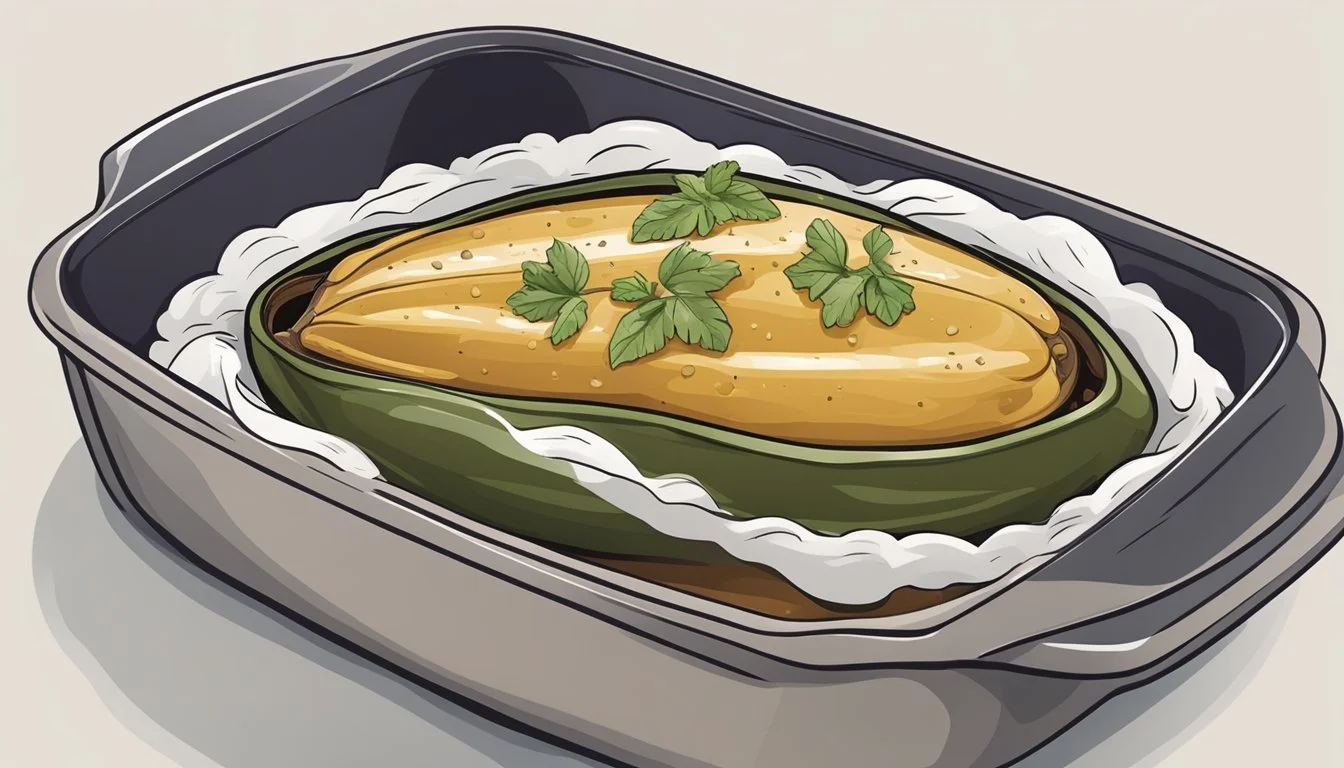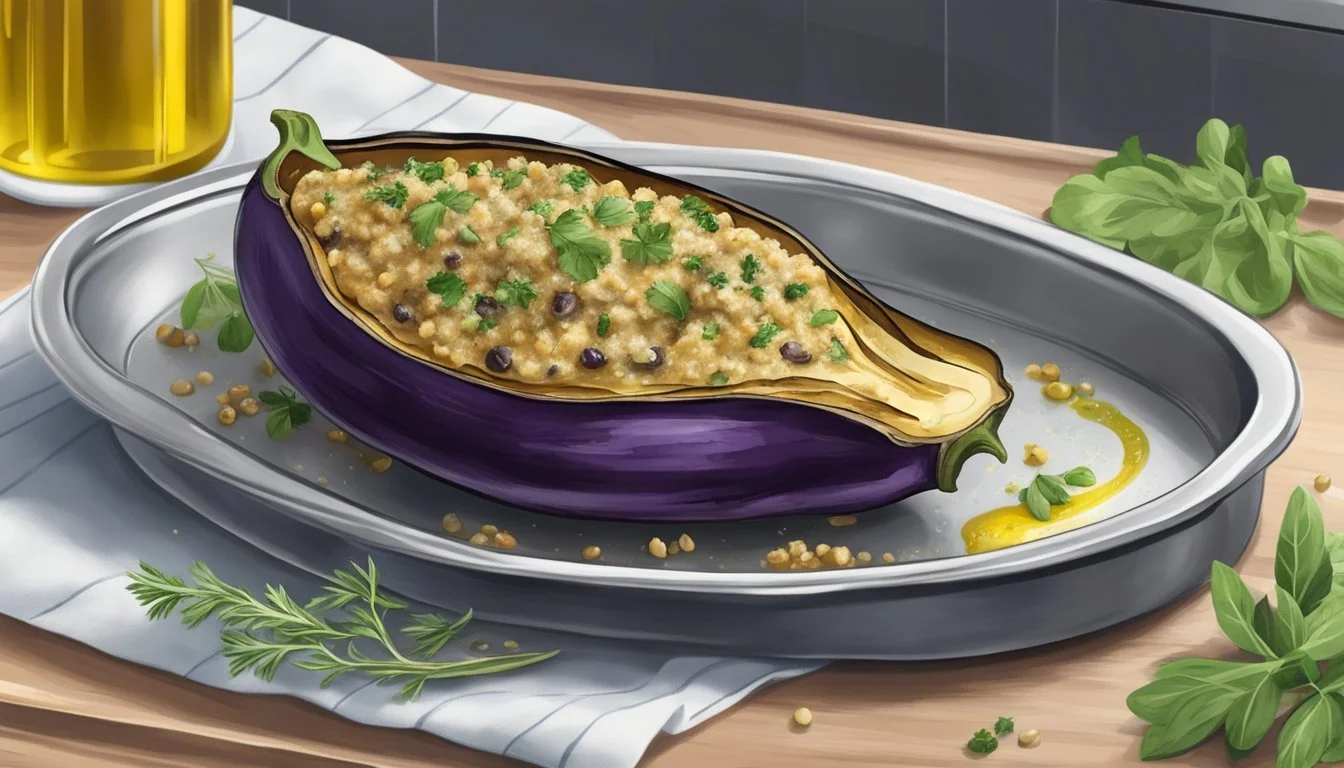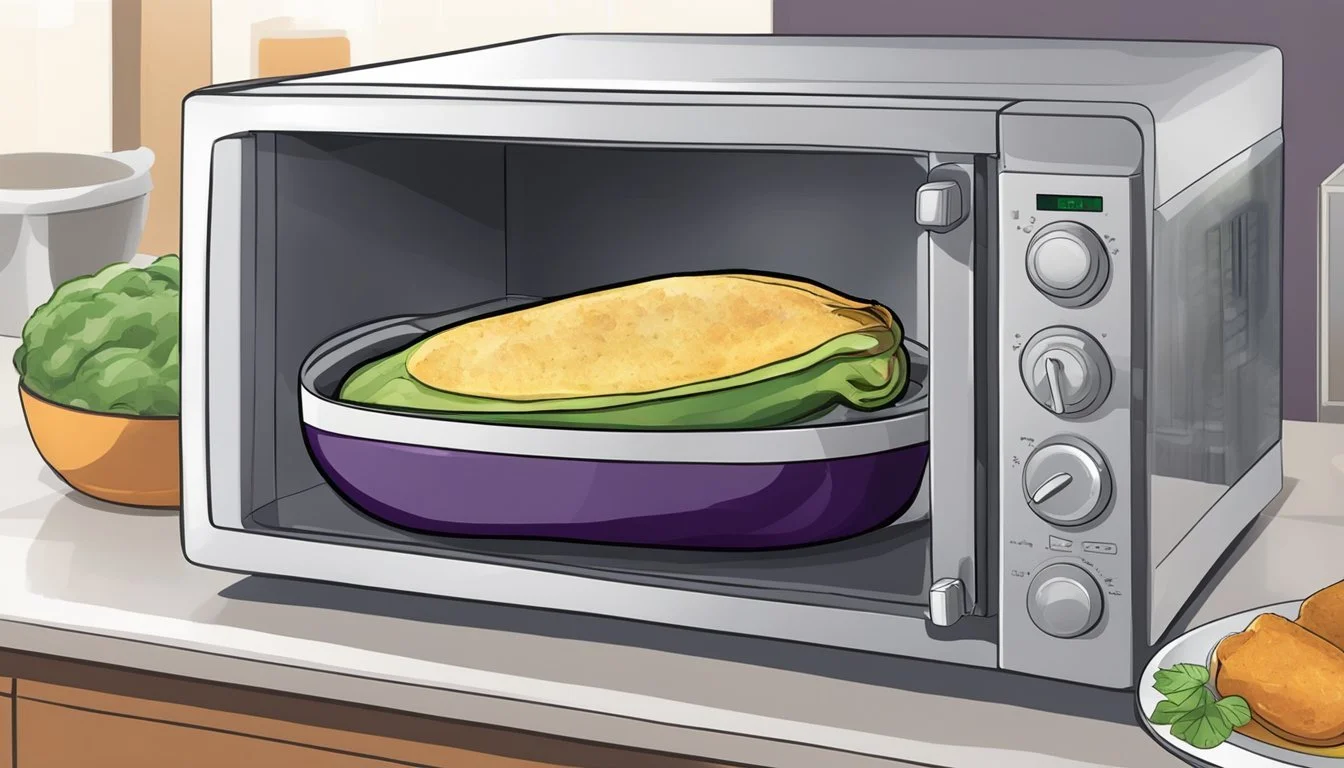How to Reheat Gluten-Free Stuffed Eggplant for Perfect Warmth and Flavor
Reheating gluten-free stuffed eggplant can be a delicious and straightforward process, ensuring that the dish retains its original flavors and textures. For those who follow a vegetarian or vegan diet, this reheating guide is useful to maximize the taste of your stuffed eggplant leftovers. The best way to reheat stuffed eggplant is by using an oven, which helps to maintain the quality and moisture of the dish.
To reheat, preheat your oven to 350°F (175°C) and place the stuffed eggplant in an oven-safe dish. Cover it with foil to retain the moisture and heat it for 15-25 minutes, or until the internal temperature reaches 165°F (74°C).
This method not only warms the eggplant thoroughly but also ensures that the gluten-free stuffing remains flavorful without drying out. By following these steps, you can enjoy your vegetarian or vegan stuffed eggplant as if it were freshly made.
Understanding Stuffed Eggplant
Stuffed eggplant is a nutritious and flavorful dish with roots in Mediterranean cuisine. Key considerations include its nutritional benefits and the various types of eggplant that can be used.
The Nutritional Value of Stuffed Eggplant
Stuffed eggplant provides a rich mix of nutrients, making it a healthy option. Eggplant itself is a good source of dietary fiber and potassium. The fiber aids in digestion, while potassium supports heart health.
When combined with other ingredients like vegetables, grains, and cheese, the dish offers a balance of vitamins and minerals. For those following a gluten-free diet, substituting traditional grains with gluten-free options ensures the dish remains accessible to everyone.
Ingredients such as tomatoes, garlic, and herbs not only enhance the flavor but also contribute antioxidants. These nutrients help reduce inflammation and support overall wellness.
Different Varieties of Eggplant
Various types of eggplant can be used in stuffed eggplant recipes, each offering unique qualities.
Globe Eggplant: This is the most common type and is known for its large size and meaty texture. Ideal for stuffing due to its ample cavity.
Italian Eggplant: Slightly smaller and more elongated than the globe variety, it offers a tender flesh and subtle sweetness.
Japanese Eggplant: Thinner and longer, with a delicate skin and mild flavor, it is excellent for those who prefer a more refined texture.
Selecting the right variety depends on personal preference and the desired flavor and texture of the final dish.
Choosing the Right Ingredients
Selecting the best ingredients ensures your gluten-free stuffed eggplant retains optimum flavor and texture. Focus on choosing high-quality vegetables, proper spices, and complementary components like cheese and olive oil.
Opting for Gluten-Free Components
When making a gluten-free stuffed eggplant, verifying each ingredient is crucial. Use gluten-free breadcrumbs or omit them for a healthier option. Olive oil is excellent for adding flavor and moisture without gluten-related issues.
Including fresh vegetables such as zucchini, bell peppers, and tomatoes enhances both nutrient content and taste. Parmesan cheese not only adds creaminess but is naturally gluten-free. When selecting spices to season the filling, ensure they are labeled gluten-free; common choices include cumin and oregano.
Fresh Herbs vs. Dried Spices
Using fresh herbs such as basil and parsley elevates the dish's flavor profile. Fresh herbs add a vibrant, aromatic essence that dried spices might lack. Incorporating fresh garlic and onion into the filling also boosts the overall taste.
Dried spices like cumin and oregano are ideal for a more concentrated flavor. While fresh herbs should be added towards the end of cooking, dried spices are best integrated earlier to allow their flavors to blend with the filling. Combining both can provide a well-rounded and layered taste experience.
Preparation Before Reheating
Proper preparation is crucial for maintaining the texture and flavor of gluten-free stuffed eggplant. Attention to storing and prepping before freezing can make a significant difference in the final reheated dish.
Storing Fresh and Leftover Stuffed Eggplant
To preserve the freshness and quality of your gluten-free stuffed eggplant, store it properly right from the start. If you plan to consume it within a few days, keeping it in the fridge is the best option. Place the eggplant in an airtight container to prevent it from absorbing other smells from the fridge.
Make sure the container is sealed tightly. Use parchment paper to separate layers if stacking multiple pieces. This method not only keeps the eggplant fresh but also makes it easy to handle when reheating.
Preparing Eggplant for Freezing
Freezing is the best option for long-term storage. First, allow the stuffed eggplant to cool completely to prevent ice crystals from forming, which can alter the texture. Once cooled, wrap each stuffed eggplant individually in parchment paper to avoid sticking.
After wrapping, place the eggplants in a freezer-safe baking dish or airtight container. This step is crucial for preventing freezer burn and keeping the eggplant in good condition. Label the container with the date to keep track of its freshness.
By taking these steps, the eggplant will maintain its flavor and texture when it is finally reheated.
Reheating Stuffed Eggplant
Reheating stuffed eggplant ensures that it retains its texture and flavor. Using the oven or microwave effectively will make your leftovers taste almost as good as freshly cooked.
Oven Reheating Method
Using the oven is an excellent way to reheat stuffed eggplant, especially for maintaining moisture retention and avoiding sogginess.
Preheat the oven to 375°F (190°C).
Line an oven dish with baking paper to prevent sticking.
Arrange the stuffed eggplants in the dish, making sure they fit snugly.
Cover loosely with foil to prevent drying out while still allowing some moisture to escape.
Bake for 30-35 minutes, then remove the foil and bake for an additional 5-10 minutes to crisp the top.
Check doneness by inserting a fork into the eggplant; it should be tender and heated through.
Microwave Reheating Tips
For a quick and convenient method, the microwave can also be effective for reheating stuffed eggplant.
Place the stuffed eggplant in a microwave-safe dish.
Cover with a microwave-safe lid or plastic wrap, leaving a small vent.
Heat on medium power for 2-3 minutes, checking halfway through.
Rotate or stir if necessary to ensure even heating.
Continue heating in 1-minute intervals until the eggplant is thoroughly warmed.
Using the microwave method may result in slightly less crispy results, but it is excellent for a quick and easy dinner reheating.
Tips: To keep the eggplant moist, consider adding a small splash of water or extra sauce before reheating.
Serving and Presentation
When serving gluten-free stuffed eggplant, it is essential to consider enhancing its flavors with sauces and garnishes and appropriately sizing portions based on the type of meal.
Enhancing Flavor with Sauces and Garnishes
To elevate the flavor of gluten-free stuffed eggplant, consider pairing it with a variety of sauces and garnishes. A drizzle of tahini sauce or a spoonful of marinara sauce can complement the dish well. Fresh parsley and basil leaves not only add a burst of color but also enhance the taste.
Adding a sprinkle of grated parmesan cheese offers another layer of texture and flavor. Lemon wedges on the side can provide a refreshing contrast, allowing diners to adjust the acidity to their preference. Choose garnishes that not only add visual appeal but also enhance the eating experience.
Portion Sizes for Different Meal Types
Serving sizes can vary depending on whether the gluten-free stuffed eggplant is being served as a main course or a side dish. For a main course, a whole stuffed eggplant per person is typically appropriate. This ensures that each serving is hearty and filling.
If the dish is intended as a side dish, half an eggplant per person may suffice. This proportion allows it to complement other main dishes without overwhelming the plate. Adjustments can be made based on appetite and dietary preferences, ensuring that each meal is balanced and satisfying.
Additional Tips and Tricks
When reheating gluten-free stuffed eggplant, there are several methods to ensure it remains flavorful and economical. Read on for ways to enhance the quality of your leftovers and maximize the affordability of this dish for your meal planning.
Enhancing Leftovers
To enhance the flavor of your leftover gluten-free stuffed eggplant, consider adding fresh ingredients during reheating. For example, sprinkle fresh herbs like basil or parsley before serving.
Reheating in the oven or air fryer helps retain crispiness. Preheat the oven to 350°F, place the stuffed eggplant on an oven-safe dish, cover with foil, and heat for 15-25 minutes. For a crisper texture, remove the foil in the last 5 minutes.
To prevent the eggplant from drying out, add a splash of water or extra tomato sauce before reheating. This trick adds moisture and enhances the overall texture.
Economical Meal Planning with Eggplant
Eggplant is an affordable and versatile ingredient, making it ideal for family-friendly meal prep. Buy eggplants in bulk when they're in season to save money.
Roast a large batch of eggplant slices and freeze them for future use. When needed, you'll have a ready-to-use ingredient for various dishes, including stuffed eggplant.
Leftover cooked eggplant can be used in salads, pasta, and sandwiches. Transforming leftovers into new meals decreases food waste and extends your ingredients' usability.
Incorporate budget-friendly ingredients like quinoa, beans, or lentils as fillers for the stuffed eggplant. These additions not only stretch the dish further but also boost its nutritional value.
By planning ahead and using these economical tips, you can keep meals both tasty and budget-conscious.
Alternatives and Variations
For those looking to reheat gluten-free stuffed eggplant, consider exploring vegan modifications or adding unique spices and ingredients to vary the taste. Both vegan options and creative flavor enhancements offer exciting ways to enjoy this dish.
Vegan and Vegetarian Alternatives
For vegan and vegetarian variations of gluten-free stuffed eggplant, replace the meat with plant-based proteins like lentils, chickpeas, or tofu. These ingredients maintain the dish’s protein content and align with dietary preferences.
Incorporate eggplant lasagna inspired methods by layering slices of eggplant with vegan cheese and spinach. Eggplant parmesan without the breadcrumbs can also be a delicious twist, using a combination of eggplant meat and dairy-free cheese.
Creating Different Flavors
Experiment with spices and sauces to create variety. For a Mediterranean twist, use herbs like oregano, basil, and thyme, along with a drizzle of balsamic glaze. Sprinkle sumac or use cardamom sauce, as in recipes by Dishing Out Health, for Middle Eastern inspiration.
Another option is to include additional vegetables such as bell peppers and zucchini, which complement eggplant well. Incorporating nuts like pine nuts or walnuts can add a crunchy texture, providing a pleasing contrast to the tender eggplant.






